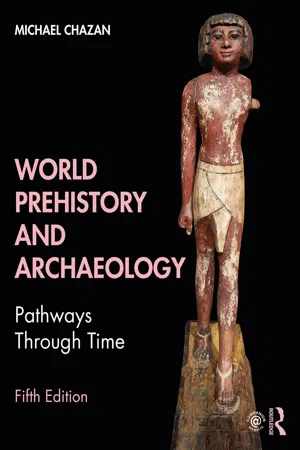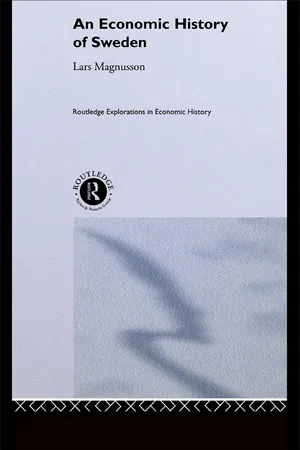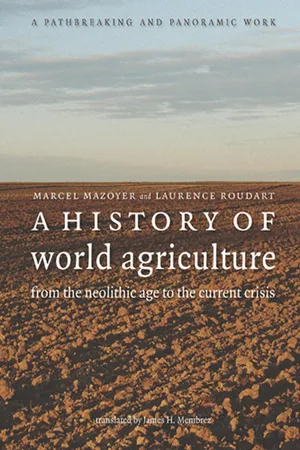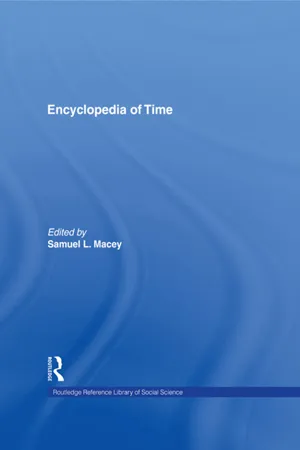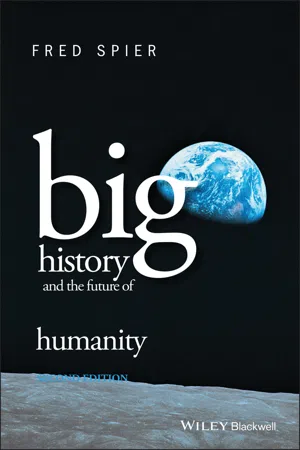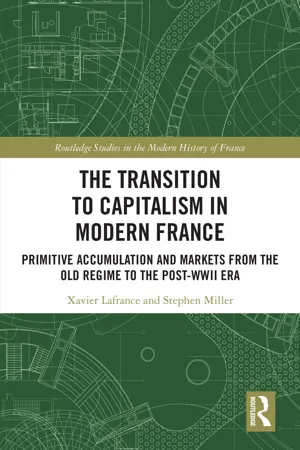History
Agricultural Revolution
The Agricultural Revolution refers to the significant shift from hunting and gathering to farming and domestication of animals that occurred around 10,000 years ago. This transition led to the development of settled communities, the rise of complex societies, and the eventual emergence of civilizations. It marked a pivotal moment in human history, fundamentally altering the way people lived and interacted with their environment.
Written by Perlego with AI-assistance
Related key terms
1 of 5
12 Key excerpts on "Agricultural Revolution"
- Shahal Abbo, Avi Gopher, Gila Kahila Bar-Gal(Authors)
- 2022(Publication Date)
- Cambridge University Press(Publisher)
1 WHAT IS THE Agricultural Revolution? The Agricultural Revolution (which made us all – humans – food-producers) is a major landmark in human history. It reflects a significant transformation in the general organiza- tion of human society and its components (see Glossary, General Terms, Agricultural Revolution). Since the advent of humans as tool-makers, some three million years ago, that is, since the moment we began producing tools and using them as a key vehicle in our daily activities, no transformation was as significant as the Agricultural Revolution. After three million years of living in small, mobile communities while subsisting by hunting animals and gathering plant foods, the Agricultural Revolution, which took place post-Pleistocene, during the Neolithic period, just over 10,000 years ago, brought about a prominent transformation in human life-ways. Mostly, it allowed humans to become food-producers, rendering them a unique and singular being on Earth. Small or large sedentary farming villages, characterizing the new way of life in the Near East, soon grew in size to very large villages, also known in Neolithic research as towns, 1 which later became cities (Figure 1.1). Some claim that the development of cities in the Near East about 6,000–5,000 years ago, compared to the large villages that preceded them, was but a natural development of phenomena that had originated in the Agricultural Revolution. Others see a major significance in this transformation of urbanization. In their view, and we concur, this was another revolution that bore additional extensive consequences for the socio- economic fabric.- eBook - PDF
World Prehistory and Archaeology
Pathways Through Time
- Michael Chazan(Author)
- 2021(Publication Date)
- Routledge(Publisher)
The transition from hunter-gatherer societies to agri-cultural societies is one of the most profound and significant events in prehis-tory. The origins of agriculture can be viewed as a broad phenomenon that can be broken into three components. 1. Domestication . A relationship between humans, on the one hand, and plants and animals, on the other. 2. Technology . The tools used for daily tasks, including tools used for harvesting and processing food and installations for storage. 3. Community . The development of settled villages and a constructed landscape. The development of agriculture involves important shifts in social orga-nization, leadership, and the relationship between kin groups and property. The shift to agricultural society also had significant effects on cosmology—the way people saw themselves in relation to supernatural forces. The historical photo-graph of the Zuni Pueblo in Figure III.2 gives a sense of the size and organiza-tion characteristic of farming villages. Early anthropologists and archaeologists saw the development of agricul-ture as the natural result of an inherent human tendency to move toward more advanced ways of life. Today, most archaeologists reject both the association between agriculture and progress and the use of progress to explain changes in prehistory. We are left with the challenge of discovering the diverse pathways that societies around the world took toward agriculture and grappling with the question of what caused those societies to change. FIGURE III.1 Manually planting rice in China gives a sense of how farmers both shape the land-scape and how agriculture fits within a structure of social relationships. domestication The relationship between humans, on the one hand, and plants and animals, on the other, in which the humans play an integral role in the protection and reproduction of plants and animals. technology The tools used for daily tasks, including farming, food processing, and food storage. - eBook - PDF
Soils, Land and Food
Managing the Land during the Twenty-First Century
- Alan Wild(Author)
- 2003(Publication Date)
- Cambridge University Press(Publisher)
23 3 The development of agriculture and systems of land management 3.1 introduction Starting about 10 000 years ago in western Asia a slow change began in the way people procured food. For many thousands of years they had relied wholly on hunting animals, fishing, and gathering plants, tubers and seeds. Now they began, in addition, to sow or plant a few species of plants and keep domestic and scavenging animals. Permanent settlements were established at watering-places and food was stored for times of shortage. At some centres urban civilizations developed. Hunting and gathering continued to provide food but to a progressively decreasing extent. This change from hunting and gathering to settled farming, which occurred at different times in different places, is known as the Neolithic or Agricultural Revolution because of the effects it had on human society. From its very beginning farming has changed and evolved. From the work of archaeologists and historians we now know, though as yet imperfectly, something of the techniques that have been used during the last 10 000 years. We also know that some of the civilizations sur-vived for very long periods while others failed or struggled to survive. Reasons for failure include climate change, as occurred in Iceland and Greenland around 800 years ago, and methods of land management that did not sustain food production, as probably occurred in Central America at the time of the Mayan civilization. Lessons for the future can be learned from the successes and failures of the past. This chapter describes the development of agriculture, and partic-ularly of techniques of land management, up to the middle of the nine-teenth century. The empirical knowledge and skills of farmers, artisans and others provided the base from which later scientific applications could be developed. Much fuller information on the development of - eBook - ePub
The Evolution of Culture
The Development of Civilization to the Fall of Rome
- Leslie A White(Author)
- 2016(Publication Date)
- Routledge(Publisher)
PART TWO The Agricultural Revolution and Its ConsequencesPassage contains an image
Chapter 12 THE Agricultural RevolutionWe come now to a most interesting and important period in the history of culture, namely, the first great cultural revolution. After about a million years of cultural development, during which time cultural systems were activated almost exclusively by energy from the human organism, a radical change took place: solar energy was harnessed in the form of plants and animals. The consequences were profound and comprehensive. Social organization was transformed from tribal society, based upon kinship, to civil society organized upon the basis of property relations. The ideological sector of culture, too, underwent change, but not as great as in the case of the sociological component.Evolution and revolution designate ways in which the temporal-formal process expresses itself. It will be recalled that in Chapter 1 we distinguished a temporal-formal process as well as a temporal and a non-temporal, formal-functional process. The temporal-formal process is characterized by a chronological sequence of forms: one form grows out of one and into another. This process is usually called evolution, and we have so termed it in Chapter 1 . But it will be useful and instructive to distinguish between quantitative and qualitative changes which may take place within this temporal-formal process. When the changes are quantitative we call the temporal-formal process evolution; when they are qualitative we call it revolution. When in the course of reproduction and descent a small primate species becomes a large primate species, we call it evolution. But when a qualitative change takes place, such as occurred in the origin of man with his new and unique ability to symbol, we call it revolution. Man is the child of the Primate Revolution. The terms evolution and revolution are applicable to systems, or systemic processes, only. Evolution is change within the framework and limits of a system. Revolution is a radical - eBook - PDF
Food, Politics, and Society
Social Theory and the Modern Food System
- Alejandro Colas(Author)
- 2018(Publication Date)
- University of California Press(Publisher)
chapter 2 The Natural and the Social The Agricultural Revolution 22 | Chapter Two from foragers to cultivators For millions of years, hominids (the ancestors of modern humans) and early humans foraged and hunted for their food. The first signs of delib-erate cultivation of plants and domestication of animals, as identified by scholars, appear about 12,000 years ago, about the time when global temperatures began to rise at the end of the Ice Age (Pleistocene), and the beginning of the current climatic age, the Holocene. In terms of the evolution of cultures, this period, the Neolithic, the New Stone Age, is distinguished from the Palaeolithic, the Old Stone Age, by a sophistica-tion in stone tools, prior to the use of metals in the Bronze and Iron Ages. The Agricultural Revolution is thus also known as the Neolithic. Food production led to profound changes in human society, population size, division of labor, urban civilization, and complex institutions and state systems, as we shall detail in what follows. 1 Homo sapiens appeared in the fossil record some 300,000 years ago, and modern humans in their present anatomical and behavioral forms (Homo sapiens sapiens) about 50,000 years ago, preceded by their near relatives, the Neanderthals, by another 50,000 years. They were the product of a long chain of evolution of hominids (proto-human) forms starting about 7 million years ago in Africa. Features of this evolution are toward upright posture, bipedal locomotion, larger body size, larger brain size, receding jaw and neck muscles, and reduced ribcage and gut size. These trends are associated with developments in material and tech-nical cultures: evidence of manufactured tools of stone and bone, fash-ioned for cutting and hammering. Bipedal posture and locomotion freed the hands, allowing the fashioning and use of tools. - eBook - ePub
- Lars Magnusson(Author)
- 2000(Publication Date)
- Routledge(Publisher)
It was the agrarian revolution that finally managed to break up this structural system with its social and institutional ‘iron cages’ (Max Weber). The term ‘agrarian revolution’ may be used in various senses. Our point of departure here should, however, be what this revolution really achieved—a growth in agricultural production—rather than the breakthrough of a particular technology. Thus it is feasible to speak of an agrarian revolution which increases per capita food production so much that there is a major rise in production surplus in the agricultural sector over an extended period of time. In other words, what is needed is a growth in agricultural production capable of causing major disruptions in the cycle of crises and the traditional institutional arrangements.The importance of the institutions may be illustrated here by the theory of the ‘peasant economy’ formulated in the 1920s by Chayanov, the Russian economist, which draws largely on conditions in Russia. Chayanov emphasised that the peasant economy could easily experience periods of rising per capita growth. But the system of social regulations surrounding this economy ensured that such a rise in growth resulted mainly in a fall in labour supply and/or the dissipation of the profit on festivities and other luxury consumption. By the same token, a fall in yield caused a sharp increase in the villagers’ work input. Another variation on this theme is Malthus’ theory, which postulated that a rising surplus will result in rapid population growth. Thus in both Chayanov and Malthus we find the basic idea that within the framework of the peasant economy, higher incomes do not generate an increase in savings and investments.Growth can certainly be absorbed, as Chayanov describes, for short periods, particularly if it is regarded as temporary and unstable. We know that actors are reluctant to change their behaviour. But they are sometimes compelled to, at least under certain conditions. In this case it is conceivable that rapid agricultural growth, coupled with the realisation that the gains are not short-term, may have been strong enough motivation to change behaviour in the long term, for example towards using a larger surplus for investments. - eBook - ePub
A History of World Agriculture
From the Neolithic Age to the Current Crisis
- Marcel Mazoyer, Laurence Roudart(Authors)
- 2006(Publication Date)
- Monthly Review Press(Publisher)
In most of the industrializing temperate countries, the gains in production obtained through the first Agricultural Revolution were more rapid than population growth. These gains were characterized first of all by the disappearance of shortages and famines, then by a lasting improvement in diet. Finally, they led to the formation of a growing marketable surplus, capable of supplying the rapidly expanding nonagricultural and urban populations, now able to make up more than one-half of the total population.The Agricultural Revolution indeed influenced the growth of the industrial revolution, but there is no doubt that without large-scale industrialization and urbanization, the first Agricultural Revolution could not have developed so completely. Finally, neither one of these revolutions could have appeared without the profound juridical, social, political, and cultural transformations which put an end to the ancien régime.Thus was born a new economic and social system whose most striking originality was industrial, agricultural, commercial, and banking capitalism. However, strictly capitalist enterprises, using wage labor, were far from occupying the whole terrain. Indeed to the contrary, in most industrialized countries, the peasant family economy remained clearly predominant. Even in England and Prussia, it had not disappeared. Moreover, in all the other areas of the economy—craft industries, trade, transport—the non-wage labor family enterprise continued to occupy a major place. - eBook - ePub
- Samuel L. Macey(Author)
- 2013(Publication Date)
- Routledge(Publisher)
The most extreme, and very late, example was the Great Famine in Ireland following the ravages of potato blight in 1846. Any sustained increase in food availability permitted population growth. This was particularly evident in Europe and European-colonized countries overseas in the nineteenth century. Agricultural productivity had been transformed by a series of advances, collectively termed the Agricultural Revolution, which included enclosure of inefficient open fields, reclamation of fenland and moorland, introduction of new fodder crops like turnips and clover, development of balanced crop rotations, and conservation of soil fertility by marling, liming, and mixed farming. Regional famines were eliminated by the growing economic integration of national territory promoted by new roads, canals, and railways. Later in the century, substantial food imports became available to Europe's expanding population, above all from the newly opened-up wheatlands of the North American interior. A review of more recent trends in the food/ population balance suggests that at a global scale the balance has improved significantly in the last half-century. Despite unprecedented population growth, global food production has expanded at an even faster rate, so that the price of most food grains has fallen in real terms. A second Agricultural Revolution in the developed world—based on mechanization, chemical fertilizers, and pesticides—has permitted major increases of production in the West from the 1950s. More recently, similar technological developments in association with the breeding of highly productive cereal strains have brought enhanced yields of the green revolution to appreciable parts of the Third World. However, the food/population ratios that matter for human welfare are not global ones, but those at national, regional, class, and household levels - eBook - ePub
- a. Birnie, A. Birnie(Authors)
- 2013(Publication Date)
- Routledge(Publisher)
And added to this there was the increased supply of human food which the new agriculture made available in the form of flesh-meat.From every point of view, then, the superiority of the new system to the old was beyond question. In its early stages this revolution in the art of agriculture was almost entirely confined to England and Scotland.It was British improvers and British farmers who did the pioneer work in testing and applying the new methods.Jethro Tuli, an English barrister turned gentleman farmer, invented drill sowing, deep ploughing and machine-hoeing.Viscount Towns- hend, after his political career had been terminated by the action of his energetic colleague and brother-in-law, Walpole, exerted himself to introduce winter-roots into England and did much to popularize the new four-course rotation in which fallow was replaced by turnips and clover.Robert Bakewell discovered the principles of scientific animal-breeding and within a short space of time more than doubled the average weight of sheep and cattle.Arthur Young and Coke of Holkham were the indefatigable propagandists of the movement, the one by his pen, the other by his successful experiments in practical farming.On the Continent, the new agriculture made its way with difficulty.In France, the small peasant farmers adhered obstinately to their old-fashioned methods and opposed a stubborn resistance to the progress of new ideas.Lavergne, the historian of French agriculture, has to confess that in 1850 French farmers were still at the stage from which English farmers had emerged seventy years before. 1 In Germany, the backwardness of agriculture was even more pronounced.The only bright spot was East Prussia, where the Junker aristocracy, like the English squires, took an intelligent interest in the management of their estates and played the part of agricultural improvers. In the nineteenth century, the art of agriculture continued to make notable advances, chiefly in three directions : (1) the improvement of drainage ;(2) the discovery of - eBook - ePub
- Fred Spier(Author)
- 2015(Publication Date)
- Wiley-Blackwell(Publisher)
The gain in useful matter and energy came at the expense of requiring more work. It is often assumed that the early gatherers and hunters had to expend less time and energy than agriculturists for procuring the needed matter and energy. In other words, for gatherers and hunters the energy return on investment was higher. These resources were, however, usually not very concentrated or varied greatly during the year. Unless such people lived in areas with very concentrated energy resources that could be stored all year round, such as near sea currents teaming with marine life, they had to live a nomadic lifestyle while they could not densely populate the land. As a result, they had to keep the complexity of their societies relatively low while seeking to limit population growth. Because the transition to agriculture and animal husbandry implied more work, the energy return on investment dropped. Yet the much larger concentrations of harvested matter and energy allowed far more people to live in a certain area. As a result, the conditions emerged for a rise of societal complexity.Seen from a general point of view, the agrarian revolution can be interpreted as a process consisting of two types of complex adaptive regimes, humans on the one hand and plants and animals on the other hand, which mutually adapted to each other under human dominance, with the human aim to harvest increasing amounts of matter and energy from a specific area. As a result, domestication was favorable for both humans and the few plants and animals that came under human custody. US scientist Stephen Budiansky (1957 CE –) has even argued that from a domesticated animal point of view, it is actually not clear at all who tamed whom, because humans had to work hard to provide the animals with sufficient matter, energy and good circumstances, while the animals had to do very little in return to prosper.9 A similar argument can be made for plants. However, the fortunes of the domesticated plants and animals were strongly determined by human interests, and not vice versa. Whenever humans stopped taking care of them, their numbers rapidly dwindled.The most important domesticated species were social plants and animals. These terms were already used by Alexander von Humboldt and Charles Darwin. The reader may recall that social plants, such as grasses, or animals, such as large grazers, all live in large numbers close together, which helps them not to be overwhelmed by predators. Social plants could therefore relatively easily be grown in sufficient quantities, while the sociality of animals facilitated humans to take over the role of the alpha male in domesticating herds. - eBook - ePub
The Transition to Capitalism in Modern France
Primitive Accumulation and Markets from the Old Regime to the post-WWII Era
- Xavier Lafrance, Stephen Miller(Authors)
- 2023(Publication Date)
- Routledge(Publisher)
4 The Agricultural Revolution of the Fifth Republic after the End of the 1950sDOI: 10.4324/9781003092896-5The conclusive evidence that French agriculture did not grow rapidly in the second half of the eighteenth century, or undergo a revolution in the nineteenth century, is the consensus among academic specialists on the rural transformation after the late 1950s. Describing this transformation in a manner typical of historians of postwar France, Venus Bivar remarks:Nowhere was the transformation of the agricultural sector effected so quickly and so thoroughly as in France. At the close of the Second World War, the agricultural sector was … a backward holdover of the nineteenth century, and yet by the mid-1970s, France had become the world’s second largest agricultural exporter.1This revolution would not have taken place had the market opportunities of remunerative prices continued to set the agriculture sector in motion as they had for the previous two centuries. We argue instead that the Agricultural Revolution resulted from the reorganization of the rural social structure overseen by administrators working under Charles de Gaulle. These administrators excluded the landed notables, who had dominated the parliamentary regimes of the Third and Fourth Republics (lasting from 1870 to 1940 and the end of the Second World War to 1958, respectively), so as to ration land to farmers with a plan to take out loans and purchase the latest implements needed to produce for competitive markets. In the early 1960s, once the farmers’ solvency, and thus possession of the land, depended on matching or beating the prices of other farmers facing the same competitive imperatives, France embarked on a trajectory, which turned it into a world agricultural leader by the beginning of the next decade.Prior to this epoch-making transition, rural inhabitants had focused on satisfying the subsistence needs of their households. At the beginning of the twentieth century, 50–70 percent of the population worked in agriculture. Over 50 percent of the national population continued to live in communities of fewer than 2,000 inhabitants until the 1930s. If one increases the size of a town from 2,000 to 3,000 or 4,000, the rural population would have comprised the overwhelming majority. In the decade after the Second World War, some of these rural inhabitants lived as artisans or day laborers, but most sought to assure their livelihood from about five million farms, each with an average surface area of 10–15 hectares. Above all, as Marc Bloch observed in his cartographic study of 1931, farms consisted of scores of discrete parcels of land, each about a tenth of a hectare. The extraordinary number of plots resulted from the millennia-old practice of partible inheritance, from the fact that when a farmer had savings, the available plot might not be contiguous, and from the preference for holding different types of land—arable, woods, pasture and vineyards—to maximize self-sufficiency and safeguard against natural catastrophe.2 - eBook - ePub
The Sustainability and Development of Ancient Economies
Analysis and Examples
- Clement A. Tisdell, Serge Svizzero(Authors)
- 2023(Publication Date)
- Routledge(Publisher)
During the second phase in the Near East, irrigation was improved (Wittfogel, 1957), ploughing was introduced using oxen, and the development of the extraction of secondary products from domestic animals (such as dairy items and wool) (Sherratt, 1983), as well as their use for traction, contributed significantly to increased division of labour and production. Furthermore, greater trade and diffusion of productive knowledge, as well as greater specialization in production, boosted productivity. Consequently, the economic contribution of technological growth was in all probability (in the second phase) much greater than assumed by Childe and therefore less of a deterrent to population growth than he supposed. Apart from this, other economic changes which added to productivity became increasingly important in the second phase of the Agricultural Revolution. Third, the question has arisen of whether Childe left out of consideration an important influence on population growth in the second phase of his model. Bocquet-Appel (2009) argues that once farming became well established, increased mortality due to diseases associated with greater density of population was the main factor retarding population growth. However, prior to this, in the period in which farming was becoming more established but population densities were lower, population increase was rapid due to a rise in the birth rate, lower mortality as a result of better nutrition, and the still low prevalence of diseases associated with population density. In this period, Neolithic Demographic Transition occurred and there was a demographic shift in areas experiencing agricultural development from a low relatively stable equilibrium level of population to a significantly higher one once farming was well developed. Figure 8.1 captures the essence of Bocquet-Appel’s theory. Bocquet-Appel (2009, p
Index pages curate the most relevant extracts from our library of academic textbooks. They’ve been created using an in-house natural language model (NLM), each adding context and meaning to key research topics.

